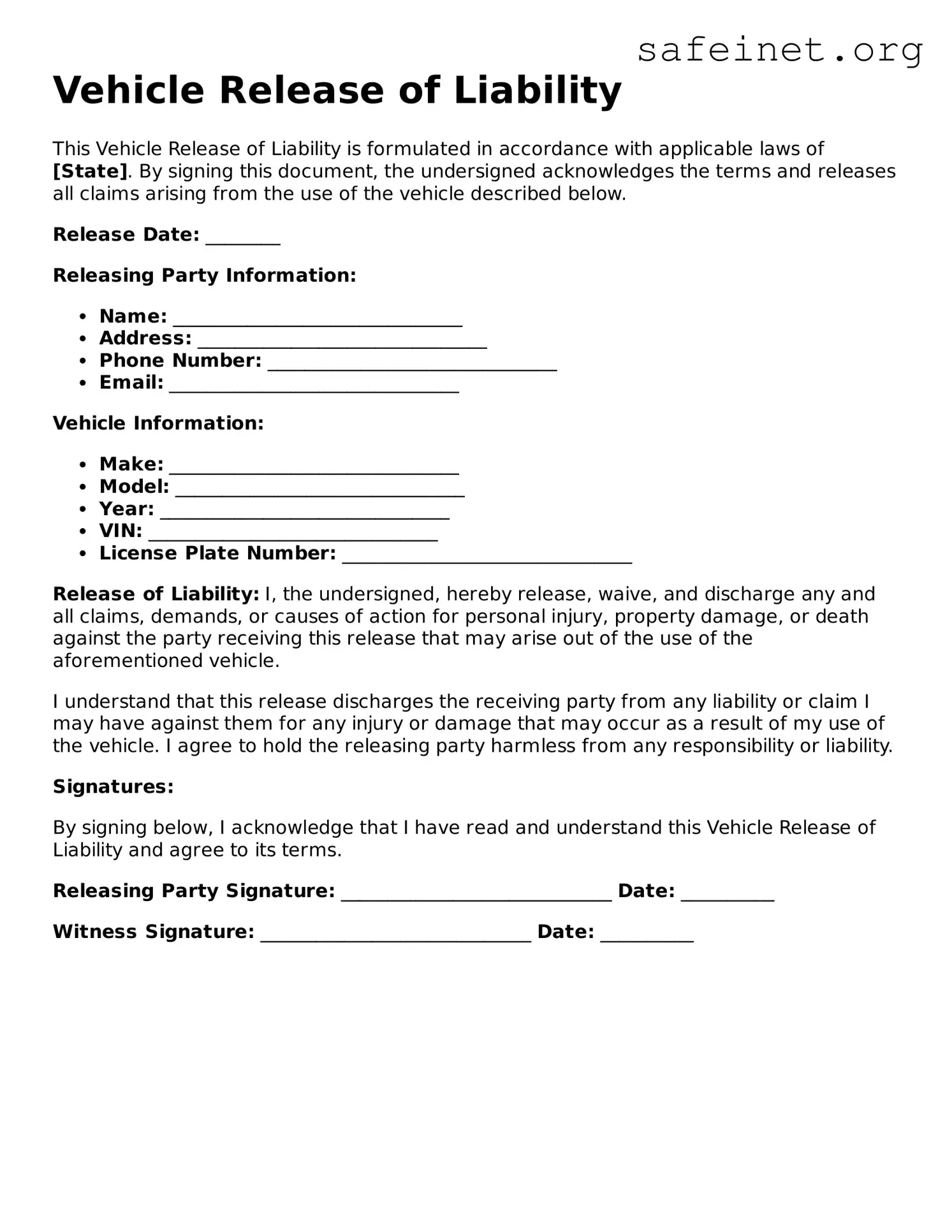What is a Vehicle Release of Liability form?
A Vehicle Release of Liability form is a legal document that allows a vehicle owner to transfer the responsibility for the vehicle to another person or entity. This form typically protects the vehicle owner from claims or liabilities associated with the vehicle once it is released to the new owner or operator. It is essential for clarifying ownership and liability concerns during vehicle transfers.
Who needs to use the Vehicle Release of Liability form?
Anyone who sells, donates, or gives away a vehicle should consider using this form. This includes private sellers, dealerships, and charitable organizations. By using this form, the original owner can ensure that they are no longer responsible for any incidents or violations that may occur once the vehicle is in the new owner's possession.
What information is required to complete the form?
The form generally requires detailed information about both the vehicle and the parties involved. This includes the vehicle identification number (VIN), make, model, and year of the vehicle. Additionally, the names and addresses of both the original owner and the new owner must be included, along with the date of the transfer.
Is it necessary to have the form notarized?
Notarization is not always mandatory, but it is highly recommended. Having the form notarized adds a layer of authenticity and can help prevent disputes regarding the validity of the transfer. Some states may have specific requirements, so it’s prudent to check local laws or consult a legal professional for guidance.
Where should I file the Vehicle Release of Liability form?
In many cases, the completed form should be submitted to the Department of Motor Vehicles (DMV) or the relevant state agency that handles vehicle registrations. Filing the form ensures that the state records accurately reflect the change in ownership, thereby protecting the original owner from future liabilities.
What happens if I do not use a Vehicle Release of Liability form?
If you do not use a Vehicle Release of Liability form, you may remain liable for any accidents, damages, or violations involving the vehicle after the transfer. This means any legal issues could result in financial liability or legal consequences for you, even if you are no longer the owner of the vehicle.
Can the Vehicle Release of Liability form be revoked?
Generally, once the form is signed and submitted to the relevant authorities, it cannot be revoked. However, if there has been an error, misrepresentation, or fraud involved in the process, it may be possible to contest the validity of the transfer in court. Consulting with a legal expert is advisable if this situation arises.
